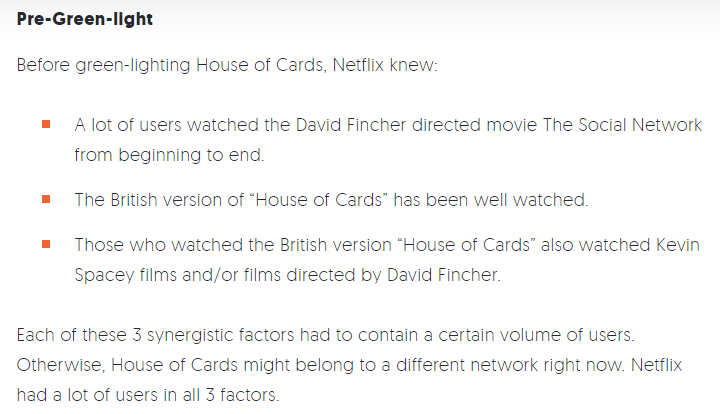
The rise and rise of TV data lakes and analytics
We’ve recently looked at some of the uses of machine learning and AI within a broadcast context but there’s another area of tech that’s a hot topic for content owners and advertisers this year: analytics.
Analytics: helping companies deliver better products and optimise their marketing

Those patterns can give insight into users’ behaviour which, in turn, helps companies understand their customers deeply.
And that, of course, can lead to successful commerce: find out what a group of people want and how they want it, then give it to them.
In a TV context, big data is used primarily to spot trends, identify opportunities, enhance user experience and maximise profits.
Big data: an enabler
Essentially, the term ‘big data’ refers to data sets that are too complex for traditional software to handle.
Systems today are capable of capturing, storing, analysing, searching, sharing, querying, and updating huge ‘data lakes’, which has led to the proliferation of predictive analytics and user-behaviour analytics.
Who uses analytics?
While terrestrial broadcasters have traditionally relied on approximate ratings to determine ad rates and drive scheduling and commissioning decisions, Netflix and Amazon are data-driven companies and use analytics across their businesses.
Actually, Amazon doesn’t just use analytics: the company provides services too, used by Channel 4 among others.
With more than 230 million subscribers between them, Netflix and Amazon Prime, the volume of viewing data the two companies draw upon is vast, and they’ve used it brilliantly.
Terrestrial broadcasters are making good progress – because they have to – and an interesting battle is unfolding between them and the tech giants.
Netflix
‘Events’: actions that can be logged, recorded and analysed
Netflix knows more about our viewing habits than many people realise. Some events the company records and analyses include…
- When people pause, rewind or fast forward
- The time, date and day of the week people watch content
- The devices subscribers use
- Where people watch content
- Searches
- Ratings are given
House of Cards – a game-changer
Data and analytics-enabled Netflix to change the game. Testing interactions, pricing and offerings, and analysing how their subscribers consumed content, Netflix had enough information to know that when they released House of Cards it would be a success:

(source)
They outbid rivals to own the rights, decided to release all 13 season-one episodes at once and the show became the first online-delivered TV series to win an Emmy.
Terrestrial broadcasters
Adding Google, of course, to the data-driven companies mentioned already, Netflix and Amazon, and the move towards commissioning long-form content for platforms such as YouTube Red, how can the UK’s terrestrial broadcasters take on the might of Silicon Valley?
BBC
The iPlayer has become a success story because of a combination of strong content, solid user-experience technology and analytics. It’s used by more than 18 million devices per week and, in 2017, the BBC introduced new personalisation features including the ability to pick up a programme where a viewer left off across multiple devices, and personalised recommendations based on viewing habits.
But the BBC cannot rely on its hoped-for changes to rules controlling UK if British TV is to compete with Netflix, Amazon and YouTube.
ITV
ITV is making significant investments in its brand and analytics by creating a ‘Centre of Data Excellence’:
ITV’s CEO Carolyn McCall is wisely keen to “refresh” the business as a result of a plan called ‘More than TV’.
Someone else at ITV commented:
“Data-rich and targeted” TV advertising sounds good but monitoring its success requires data on both the impact of the creative message on sales, leads or brand awareness as well as the delivery method itself.
The UK’s public service broadcasters do, though, have government support and there’s also the recent news that the BBC and Discovery are understood to be in the final stages of agreeing a £1 billion breakup of UKTV in a deal that “will accelerate plans to build a British streaming rival to Netflix”.
‘Half the money I spend on advertising is wasted. The trouble is I don’t know which half’
Traditionally, advertising has proved to be effective but, without any real insight, its true value has often been unclear.
While John Wanamaker, the US merchant who died in 1922, is believed to have said, “Half the money I spend on advertising is wasted. The trouble is I don’t know which half”, others reckon he was wrong: the vast majority of ad-spend is wasted.
Even today, in a world full of data, the science and art which comprise advertising is misplaced too often: ads show up apparently for people not like us when we’re watching something on TV or, online, we see them promoting the product we’ve just bought and therefore probably don’t want another one immediately after making the purchase.
Data-gathering technology and software will only improve which will enable deeper, more reliable analytics, and collaboration between ITV, Channel 4 and Sky is pointing to individually targeted advertising and greater use of data.
Whether it will be enough to beat the ‘FAANG’ companies (Facebook, Apple, Amazon, Netflix and Google) remains to be seen. Traditional broadcasters might be better off playing a different game and becoming really good at that.

In The Frame - April '23

In The Frame - March '23
